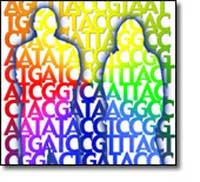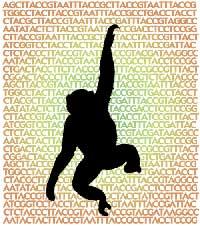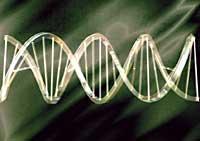Reading the small letter of DNA
2007/07/28 Galarraga Aiestaran, Ana - Elhuyar Zientzia

Genes have coded information to produce proteins. When the genes are expressed, the mechanism of protein production is launched. And proteins play a fundamental role in the organism. The key to understanding the origin of many diseases is in the genes and, since the human genome was decoded, many researchers have tried to identify the genes behind the disease. The work carried out has made today known the genetic origin of some diseases.
However, it seems that they have given excessive prominence to genes. In fact, researchers are now discovering that many parts of the genome that are not genes also play a fundamental role. They do not have information to produce proteins, but they do have other information. The key to certain diseases may be there, not just in the genes. And in some cases it is being shown that this happens.
As with diseases, in bodily functions not only command genes, but also many other parts of DNA are expressed. As we have said, they do not produce proteins. So… what do you think? And what influence do they have? To answer these questions, the ENCODE project is born, which aims to clarify what exists in the entire human genome. At the moment they have only read 1% of the genome, but it has been enough to verify that the rest of the information that is outside the genes in the DNA is really valuable and, in many cases, it is essential to understand how genes work.

The truth is that this was already suspected. In fact, to look for the genetic cause of hereditary diseases, researchers study small variants (SNPs) of thousands and thousands of fragments of the genome, to see which of them have an inadequate relationship. Recently, in this type of study, it has been shown that most SNPs related to type 2 diabetes are not in the genes, but are found in what was formerly called junk DNA.
Four years ago, therefore, the ENCODE project was launched to identify all genome sequences or fragments that present functional characteristics in the human genome. Thirty-three groups of researchers from all over the world have worked, and the three organizations that have participated are Catalan. This fact draws attention to all: almost all the parts are ever expressed.
This has been a big surprise for researchers. And until recently it was thought that only genes were expressed: The RNA is formed from DNA and as a consequence of different processes a protein is formed. Then they realized that RNA was produced not only by genes but by other sequences, but not as that produced in the production of proteins. These RNA were called microRNA or small RNA, and aroused great curiosity. Tell us: In 2002, the annual ranking of the prestigious scientific journal Science with the main discoveries or research was headed by the small RNA.
As research deepens, it has been shown that small RNA control the activity of the genes. For example, they are able to block the production of a certain protein, which can hinder the activity of the gene. They have also seen that in that man is not too separated from other animals. In fact, other species also have small RNAs in which they also intervene in the regulation of genes.
Knowing that junk DNA is not garbage, from now on researchers will try to clarify the function of the entire RNA being expressed. Perhaps not everything has a biological function, but many suspect it has a fundamental function.

On the other hand, the studies of the ENCODE project have also served to understand the evolution of the mammal genome. A few years ago, scientists believed that fragments of DNA associated with important biological functions were found in unaltered areas when they evolved. However, the data obtained in ENCODE have been contrasted with data from other species (chimpanzee, baboon, macaque, mouse, mouse, cow, dog, hen...) and they have also realized that beliefs were corrupt.
While the decoding of the human genome was a great step forward, it is clear that with it they did not finish their work, on the contrary, they will still have to work hard to read the book that keeps the secrets of the human being and understand its meaning. ENCODE has been a step in this way and until you reach the goal sure there will be more surprises.
Published in Gara.

Gai honi buruzko eduki gehiago
Elhuyarrek garatutako teknologia





